16 of the Best Car Suspension Modifications
Following on from our 5 checks for your Steering and Suspension article, this feature is more about making improvements over the manufacturer's specification. Here are 16 of the best car suspension modifications you can carry out on Volkswagen or Porsche suspension, to improve reliability, aesthetics or driving experience.
1. Narrowed and Adjustable Front Axle
Most Aircooled Volkswagens, with the exclusion of the Super Beetle and Type 25 employ a torsion bar front suspension system. We spoke about how these work in our suspension checks article, but they can be modified reasonably easily to allow for height adjustment. Weld in beam adjusters are positioned in the centre of both upper and lower torsion tubes, and with the torsion leaves passing through them, can be moved up and down to alter the ride height. If you favour the tucked wheel look then a narrowed beam is how you will achieve it. Essentially a narrowed front axle has had an equal amount removed from the upper and lower torsion tubes and have then been welded back together. On top of the arguable aesthetic benefits of narrowing your front axle, this can help to readjust your geometry after fitting dropped spindles, a brake disc conversion kit, or wider wheels. For those not experienced with a welder, we'd suggest purchasing a ready-made narrowed front axle, or commissioning the work on your own axle by a trusted specialist workshop.


2. Dropped Spindles
Let's start with the basics. Spindles can be found on either end of the front axle on Aircooled VWs. They connect to the wheel via wheel bearings and brake discs/drums and are married to the axle by torsion arms and ball joints/king and link pins on the inside. The lower part of the front shock absorber also attaches to them. The premise behind dropped spindles is raising the hub mounting part of a standard spindle a few inches higher up in the wheel arch. This raises the centre point of the wheel and lowers the car at the same time. Importantly, it keeps the same suspension shock mountings, so you can use them in conjunction with stock shocks and keep a decent amount of travel, for optimum comfort. A word of warning: dropped spindles do tend to widen the track of your car, hence their popularity in conjunction with a narrowed front beam to avoid wheel to arch contact. For owners of early watercooled VWs, a similar theory has been applied by several car builders to raise the rear hubs and brakes higher up in the arch with specially engineered drop plates. If you are going to explore this avenue then be sure to employ a reputable engineer, you don't want something like this failing.
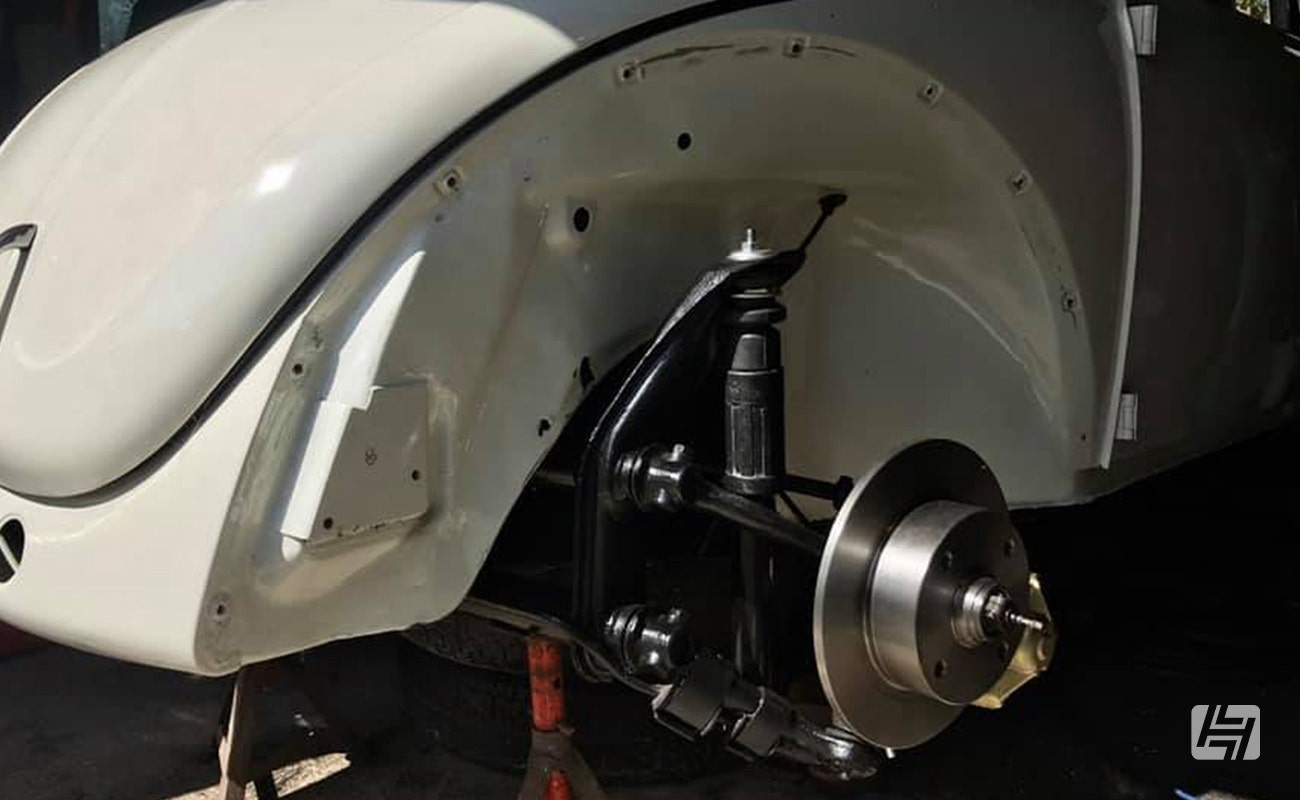

3. Performance Anti Roll Bar
For the more determined driver, body roll can compromise lap times or confidence when tackling corners at speed. It's unlikely you have chosen a vehicle that doesn't have ARBs (anti-roll bars) fitted for your more spirited driving, so we'll presume there are already mounting points and hardware in place, and your vehicle has them fitted both front and rear. The Front Anti Roll Bar is mounted underneath the body and spreads across the width of the car typically tying both sides of the suspension together. As you corner in your car, this bar twists and offers some resistance to the natural lean that occurs. Things can be improved even more so by fitting a Performance Anti Roll Bar, which is made from thicker material, further reducing the body roll. For most vehicles (and often sold as part of an anti-roll bar kit) will be an upgraded rear ARB. Fitting one without the other can cause an increase in understeer (the front of your car continues straight when you turn into a corner) or oversteer (the rear of the car slides out as you corner). Much like the front ARB, the rear ARB connects with the rear suspension on both the left and right and offers resistance to keep the car flatter through corners. The great thing with anti-roll bar kits is that you can typically upgrade them without having to lower the vehicle. So if you are looking to improve handling, but want to retain an original appearance they are perfect.


4. Adjustable Coilover Suspension
The pinnacle of static suspension options is the coilover kit. What does it offer over your standard suspension? Well, firstly it gives you the opportunity to drop your car to a height you feel suitable - not just a fixed 30 or 60mm like the 'good old days' shocks and springs. When I say pinnacle, there are some very good fixed drop suspension kits and some pretty basic Coilover kits, but if you buy a premium set such as the KW Coilover kit, with their stainless steel bodies, they'll remain fully adjustable for many years to come. In return for further investment over the entry-level KW Variant 1 coilovers (with fixed damping) KW Variant 2 coilovers also offer adjustment of rebound and their range-topping Variant 3 coilovers boast rebound and compression damping on top of height adjustment, making them a firm favourite with fast road and track drivers. On a tighter budget? Check out our SSP coilover kits, they won't break your back and are a little easier on your bank account. Why do you want to adjust the height of your car? Lowering your vehicle reduces the centre of gravity and in turn, helps to remove body roll. There's also the bonus that lowered vehicles look sportier and if you've fitted different wheels you'll be able to position the arches in just the right place, safe in the knowledge the stiffer shocks should help protect your tyres from the paintwork.


5. Longer Lasting Polyurethane Bushes
Your vehicles steering and suspension components will be mounted to the chassis in several places and it is at these critical connection points that Polyurethane bushes come into their own. Traditionally parts such as Anti Roll Bars, wishbones and steering racks are secured in place with rubber bushes and metal clamps. Of course, over time the rubber perishes and they are no longer held in place with such vigour. As a result, there is movement in a place where there shouldn't be a movement and you lose responsiveness. How do you fix it? Replacing your worn rubber suspension bushes with Polyurethane will add some extra stiffness, but also offer improved longevity over the manufacturers original bushing. Conveniently many polyurethane bushes, such as the Powerflex range that we offer for both VW and Porsche models, come as 'split bushes' with removable metal sleeves rather than one piece items. This makes installation much less of a struggle. We also offer Urethane suspension bushes and engine mounts. These are a stiffer compound than polyurethane but are generally cheaper to purchase. In the case of Mk1 Golf Bugpack urethane bush kit, these are mainly 'insert type' bushes, so they slide into an original rubber OE bush to offer additional support, rather than completely replacing it.
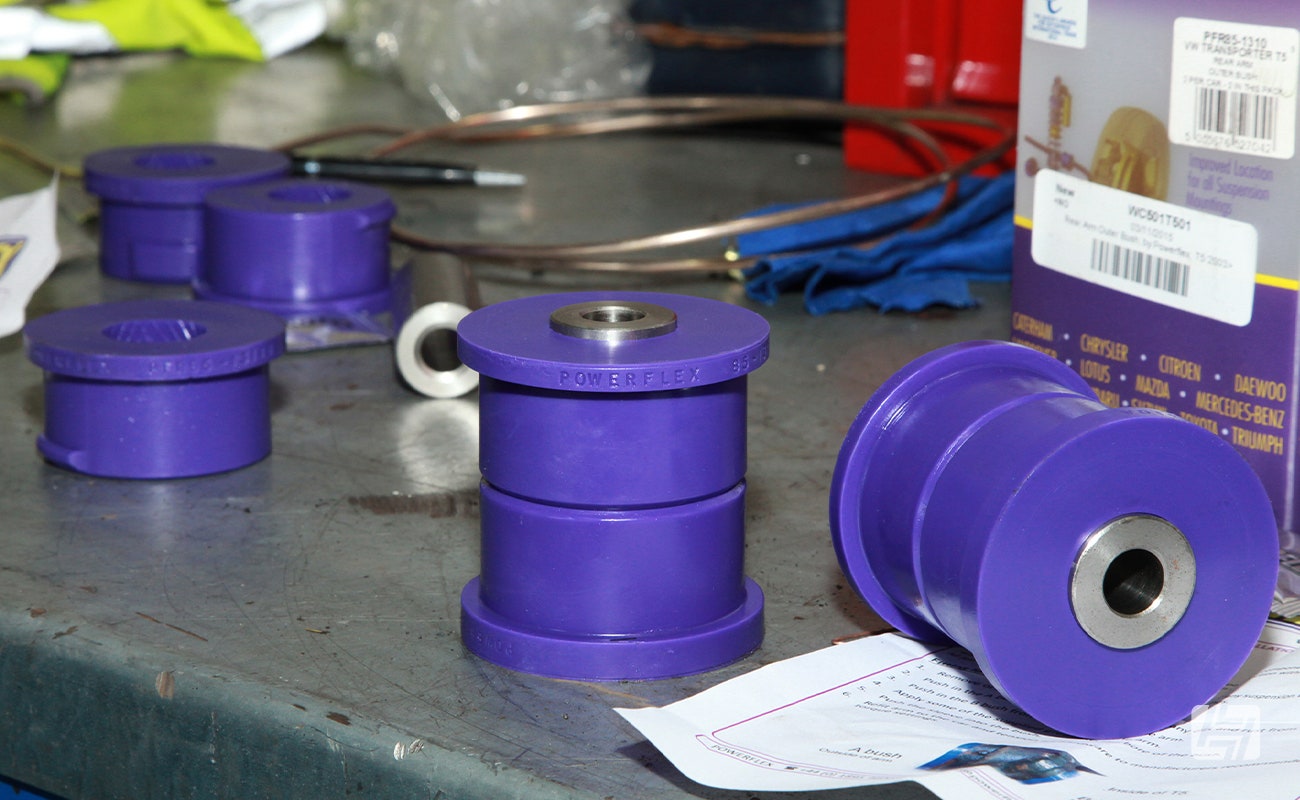

6. Adjustable Top Mounts
We'll compile a glossary of terms one day, but for now, let us give you a quick recap on camber and caster as this is basically what you would be controlling when fitting front suspension adjustable top mounts. Looking at your wheel and tyre from behind when bolted to your car (so you can see the tread pattern in full) if the top of your wheel pokes out further than the bottom, then you are running positive camber - this generally isn't used on road cars, but you may get this if you have removed the engine from the rear of a stock aircooled car. If both the bottom and the top of the tyre are directly in line with each other, then good news your vehicle has neutral camber - giving you a nice square footprint for your tyres. Negative camber is particularly apparent on the rear of lowered swing axle cars, where the wheel and tyre tuck at the top and sit much wider at the bottom.
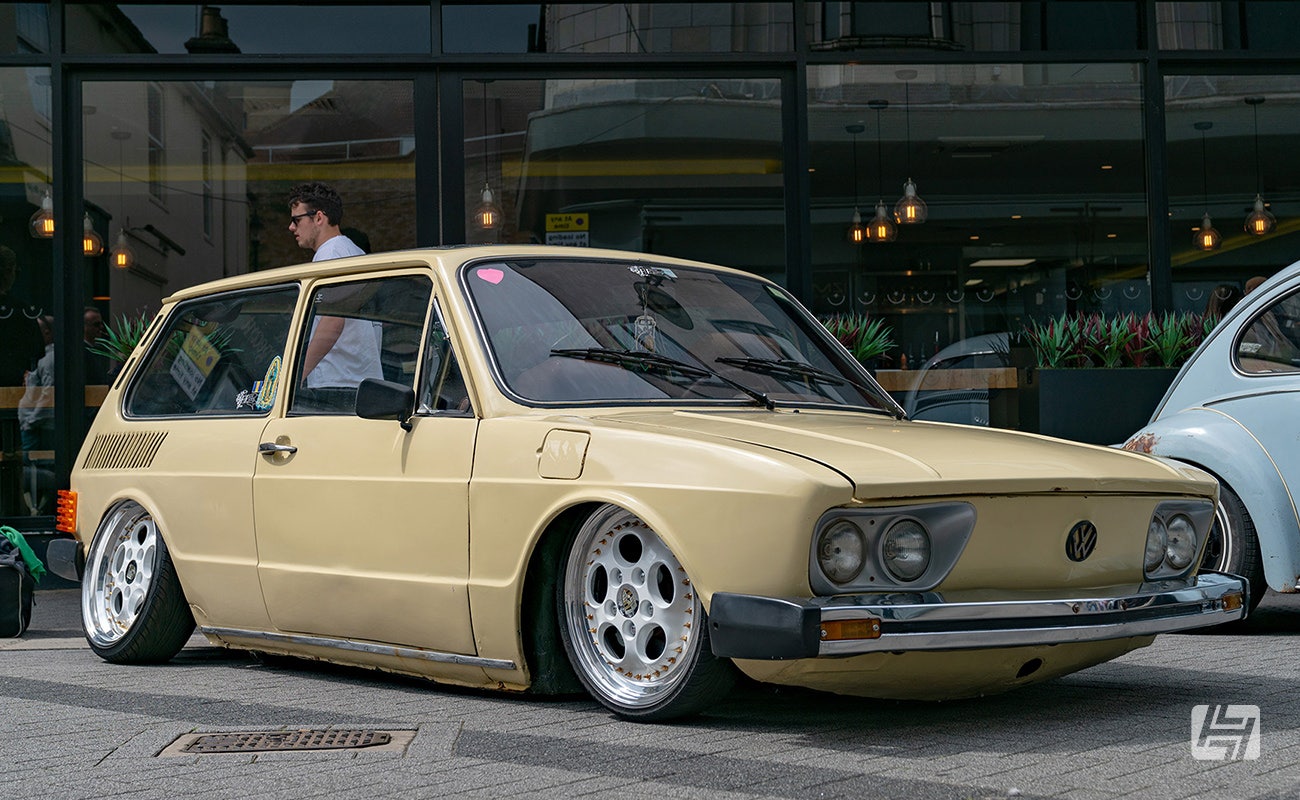

Also controlled by adjustable top mounts is Caster, the angle at which your suspension strut sits in relation to the vertical. You'll either be looking to fit adjustable top mounts for track use (allowing for much more complex circuit-specific set up) or to achieve the perfect stance based around a set of larger or wider wheels. In both cases, the strut is bolted to a top plate which fits the car perfectly but allows for Camber/Caster adjustment through a series of sliding bolts. Take care doing this yourself and ensure both sides are adjusted equally, if uncertain consult a professional as you could really upset your handling if you get it wrong.
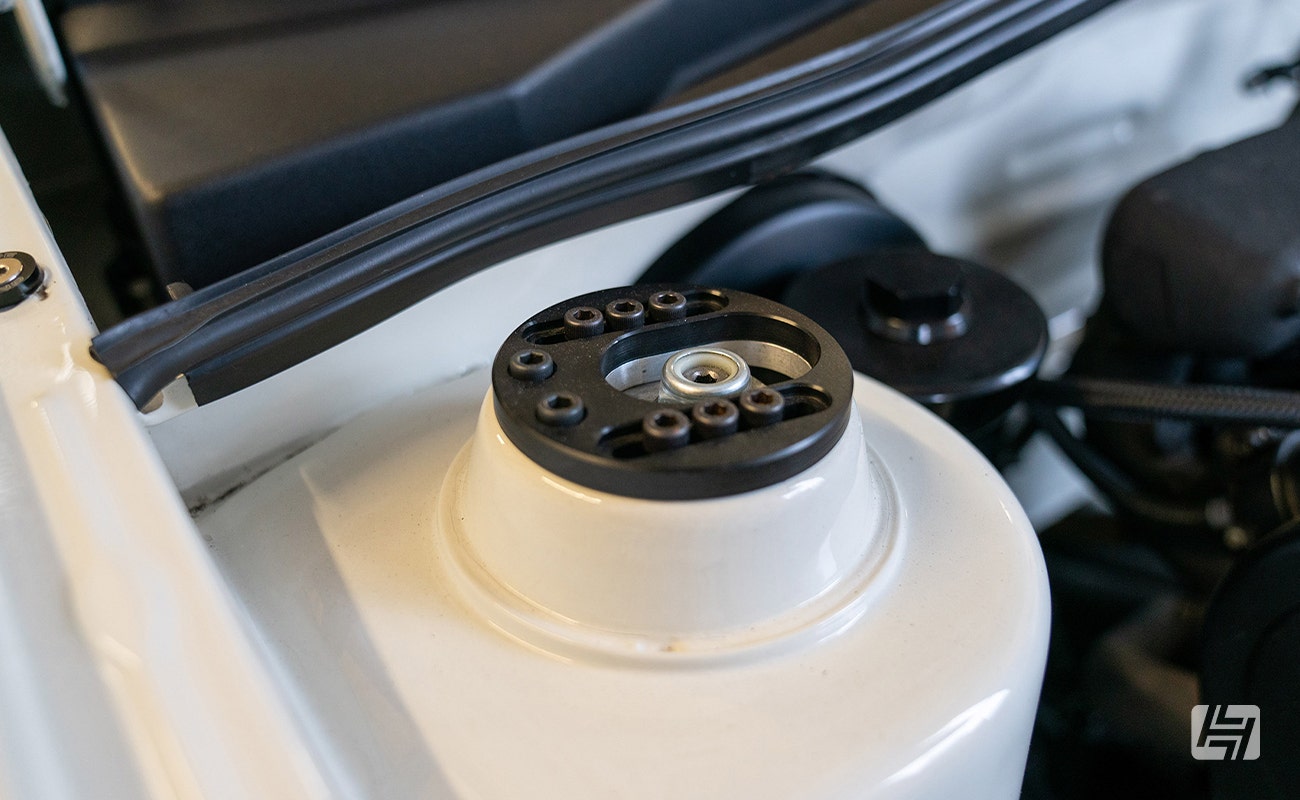

7. Air-Ride / Hydraulics
There's something pretty cool about flicking a switch and adjusting the ride height of your car. Whether it is to drop it on the deck when you arrive at a show or to raise it to tackle the speed bumps in your work car park, the practicality of both Air-Ride and Hydraulics cannot be faulted. Whilst we're not dealers or installers of either here is a quick highlight, and if either tickle your fancy give our friends at Rayvern Hydraulics a call to discuss your requirements in a little more detail. Air Suspension has been around for many years, but it is only in the past 15 that it has become such a staple of the modified car scene. Essentially the coil springs of a vehicle are replaced by bags of compressed air. When the air is let out of the bags the car drops down and when the compressor fires up and refills them, the car lifts up.
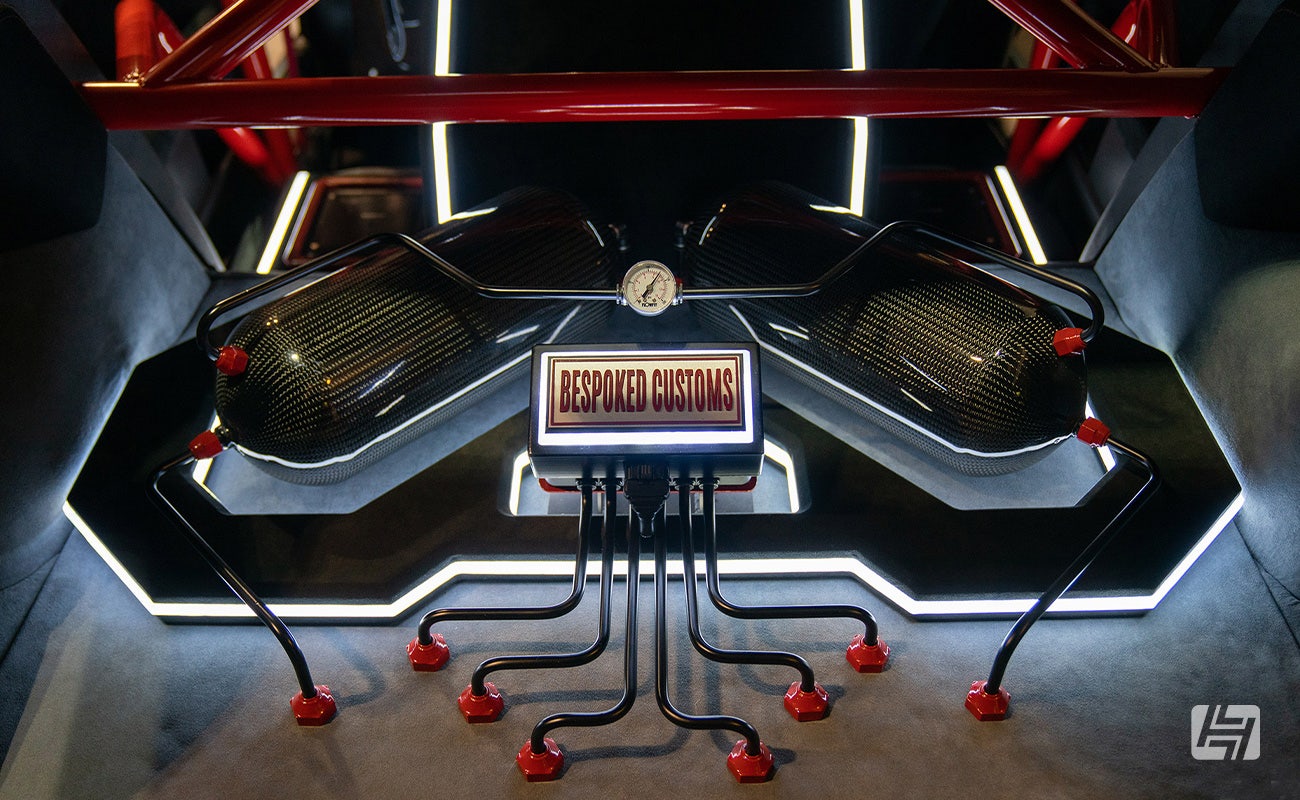

What is hydraulic suspension? Most famously seen on lowriders in rap music videos hydraulic suspension is another way to adjust your ride height at the flick of a switch. Your suspension struts are each replaced by hydraulic rams which can be pumped up and down with pressurised fluid to control the position of the wheel within the wheel arch. There are positives and negative with both and you will likely need to sacrifice some luggage space to fit the gear in... But it might just be worth it!


8. Power Steering Upgrade
Not strictly a suspension upgrade, but we'll include it all the same. For those with older, heavier vehicles, such as a Campervan or an early Golf, fitting power steering can transform practicality and give a whole new lease of life to a vehicle you'd fallen out of love with. Suddenly you don't have to be a powerlifter to parallel park it in the street and negotiating tight town centres or slow-moving traffic becomes a little more pleasurable. This isn't a product we offer currently, but we'd suggest heading onto Google to find a workshop local to you with the skills to carry out the conversion. Alternatively, for the budding DIY mechanic there are several home-made PAS kits that can be pieced together with the help of forum how-to guides.
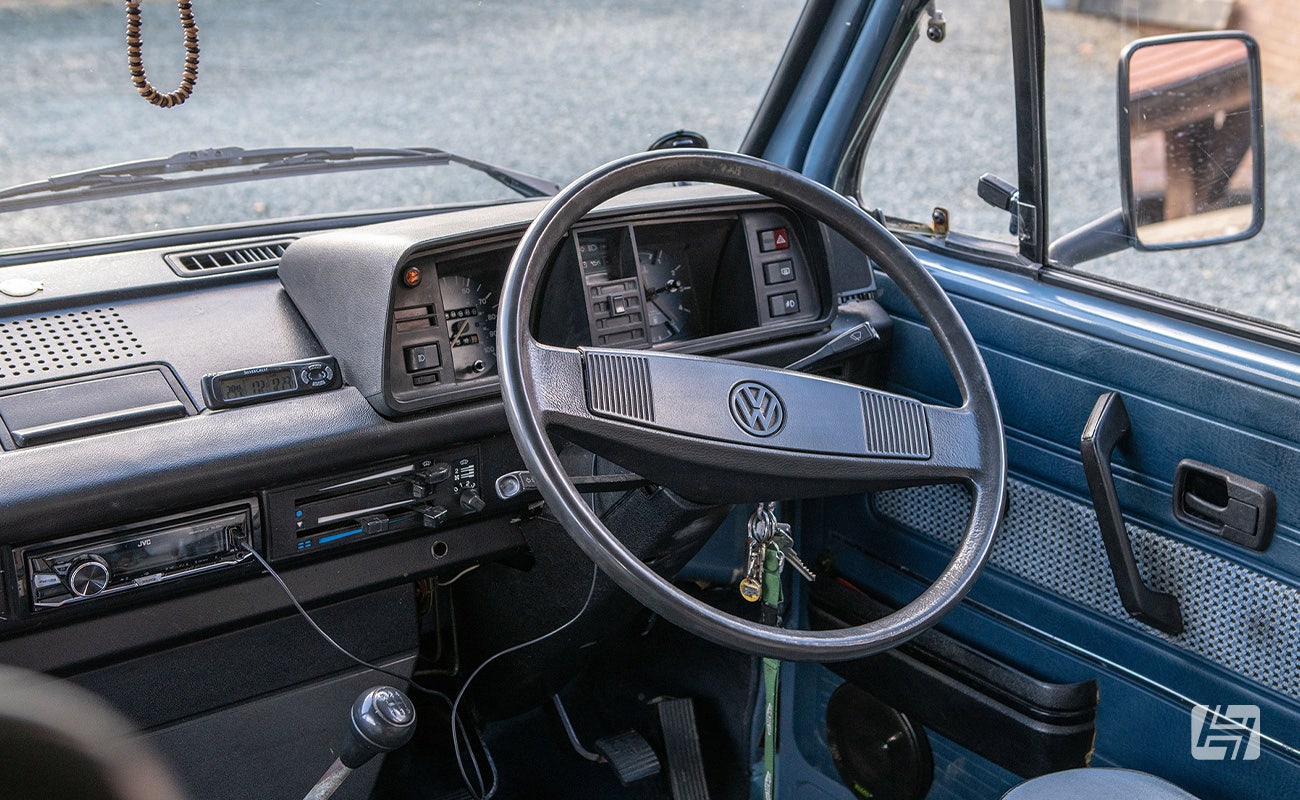

9. Smaller Steering Wheel
A steering wheel upgrade is one of the most simple modifications you can make, but the transformation can be night and day. As with PAS, it isn't a strict suspension modification, but it will affect how you input your directional instructions and will certainly give you more confidence knowing your arms and hands are more comfortable with the improved steering position. Before you purchase a new sports steering wheel measure up and compare against the size of your old one. Also consider any blind spots a new, smaller steering wheel might create with regards to your speedo or other gauges and whether your hands will catch on the stalks at all whilst turning. Whilst a smaller wheel (like this Momo Team) will offer a better feel at speed, you will need to put in additional arm work when it comes to parking, as you'll have less leverage around the steering column.


10. Adjustable spring plates
As found at the rear of Aircooled VWs and Porsches, spring plates are basically a lever mounted at the forward end to a torsion bar and the other end your wheel. Adjustment of the standard spring plate can be done by removing it from the splined torsion bar and putting it back on again, but one or two splines further round. Adjustable spring plates offer additional fine-tuning, rather than making ride height amendments by the inch. Once fitted at approximately the right ride height, a simple Allen key turn is all that is required to get the wheels and the metalwork sat in perfect harmony.
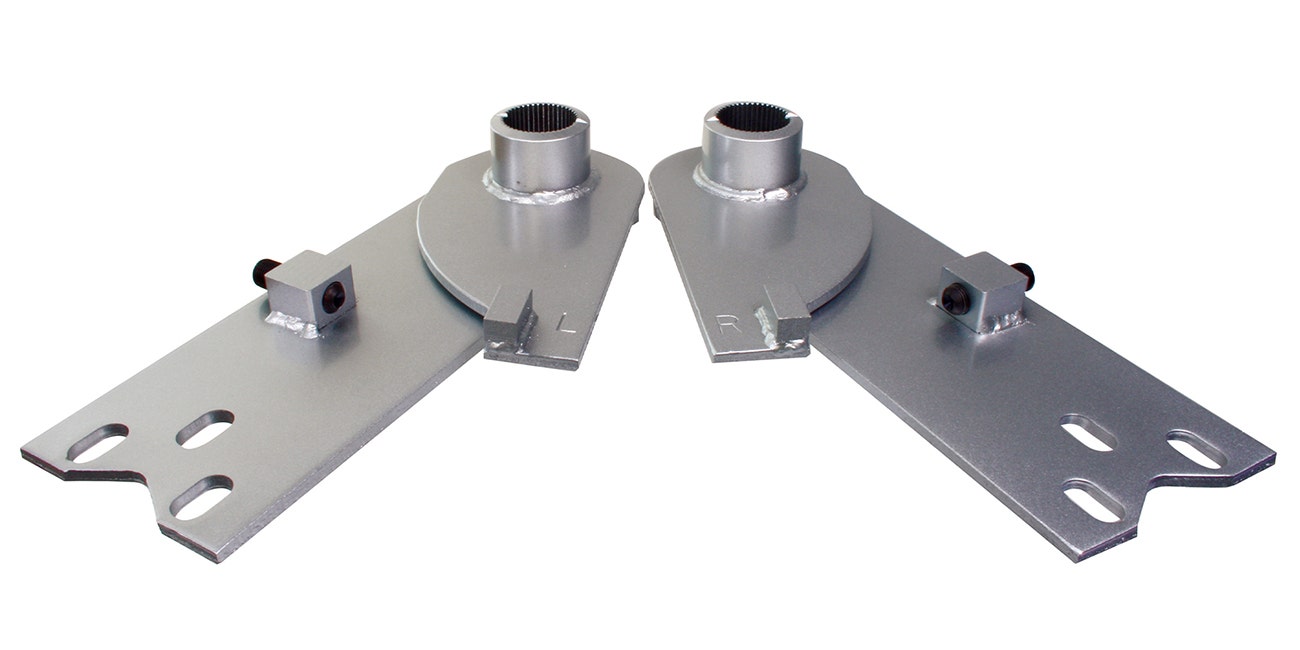

11. Gas Shock Absorbers
In a similar vein to fitting coilover suspension to improve the handling of a more modern car or bus, your classic Porsche or Volkswagen suspension will certainly benefit from fitting stiffer shock absorbers. There are two common types of shock absorbers, either oil filled and gas-filled. Typically the standard shock absorbers, as fitted by the manufacturer are oil-filled and they are specified for their ability to absorb bumps and provide optimum comfort for the average passenger. The other option and one taken by most performance shock absorber manufacturers is to use gas-filled dampers. The pressurised gas inside offers greater resistance to the piston that moves up and down, and in return rewards the driver with slightly stiffer ride. When upgrading to gas shock absorbers for your classic VW you don't necessarily have to lower your vehicle at the same time. KYB Gas-Adjust shock absorbers for example (not actually adjustable) are a great upgrade for Type 2 vans which are used to carry heavy loads or as a family campervan. Our Type 2 Suspension Handling kit is a great upgrade for stock look vans. Of course, combining a stiffer shock absorber with a reduced ride height and a lower centre of gravity makes perfect sense, from a performance point of view. Do bear in mind though, that a vehicle can be too low and for street driving especially, slammed isn't going to be the best suspension set up for speed!
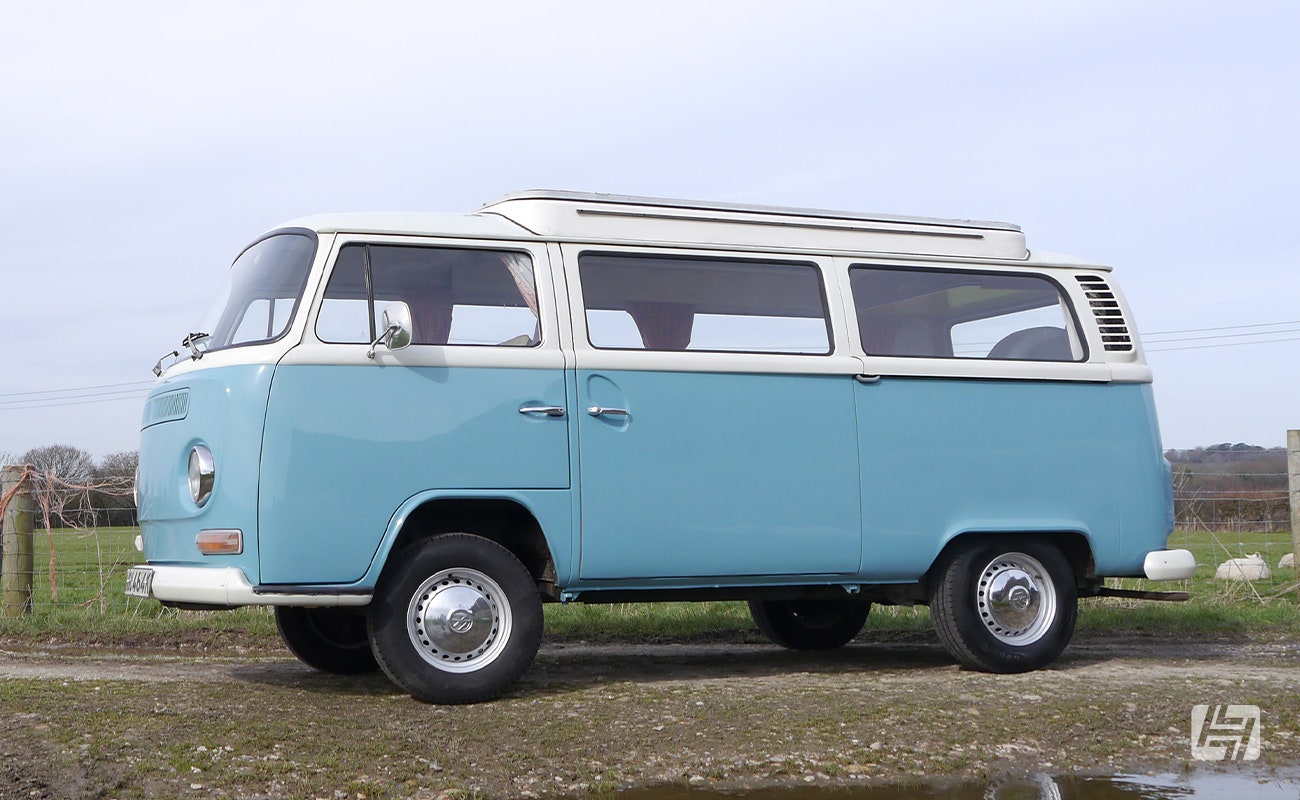

12. Decent Tyres
The right rubber can make a huge difference to your driving experience. The height of the sidewall will add or remove comfort level and as it is reduced so the body roll is reduced too, hence low profile tyres on sports cars. Tyre compound and tread pattern will be of particular interest to track day and fast road users. Of course, picking the right tyres is a balancing act between performance and longevity but if you want to circumnavigate a circuit faster than your friends' tyre choice could really give you an edge. A word of warning: soft rubber may keep you stuck to the tarmac but it'll also wear out faster than a typical road tyre, so you'll be buying replacements more regularly. You could shell out a small fortune on sticky rubber, but if you neglect to put the right air pressures inside for the atmospheric and road conditions it could all go to waste. I don't profess to be an expert on the subject, but I'm sure the answers are out there on the internet in relation to your car.


13. Wheel Spacers
Fitting wheel spacers offers 2 main benefits. The first is the visual improvement of pushing your wheels further out in the wheel arch. The second is widening the footprint of the car, making it more stable on the road, especially through corners. There are a couple of types of wheel spacers you should be aware of: 'flat spacers' and 'bolt-on' spacers. 'Flat spacers' simply slot in between the wheel and the hub mounting face and are sandwiched in place by the wheel bolts - longer wheel bolts if you've fitted anything thicker than 3mm. 'Bolt-on spacers' do just that. They are bolted directly onto the hub of the vehicle and then the wheel is then bolted into the spacer with standard length wheel bolts. Hub centric wheel spacers are available in both the 'flat' and 'bolt-on' type and these have an extended collar in the centre that protrudes in the rear of the wheel, to help centre and secure it. For spirited driving, bolt-on hub centric spacers are considered the best and safest choice.
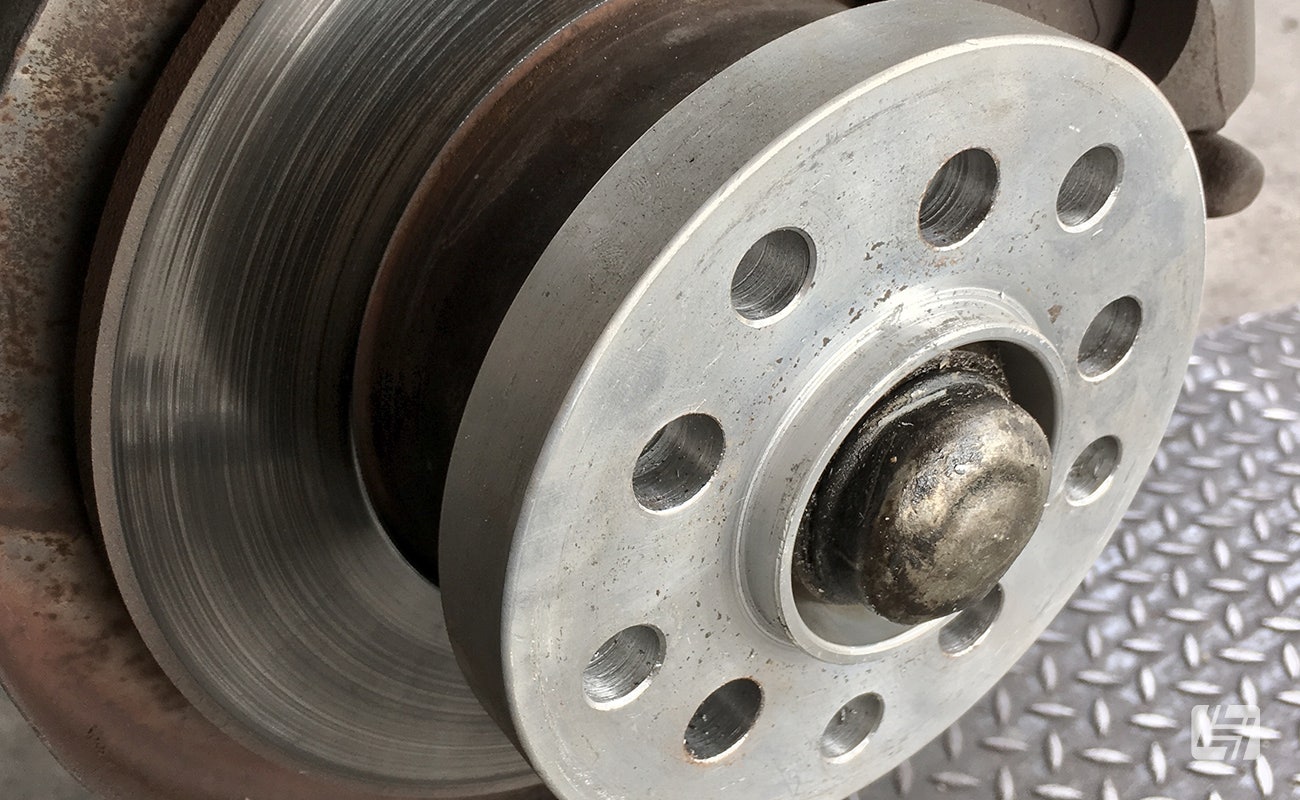

14. Strut Brace
In a similar way to an ARB kit, a strut brace connects between two suspension mounting points. You can typically purchase them for the top of the front or rear suspension turrets, or to go between the lower front suspension mounts. Their main purpose is to reduce flex in the body when cornering. As a car is stiffened with the use of sports suspension, so it will find new places to try and move about - the body is one of those!
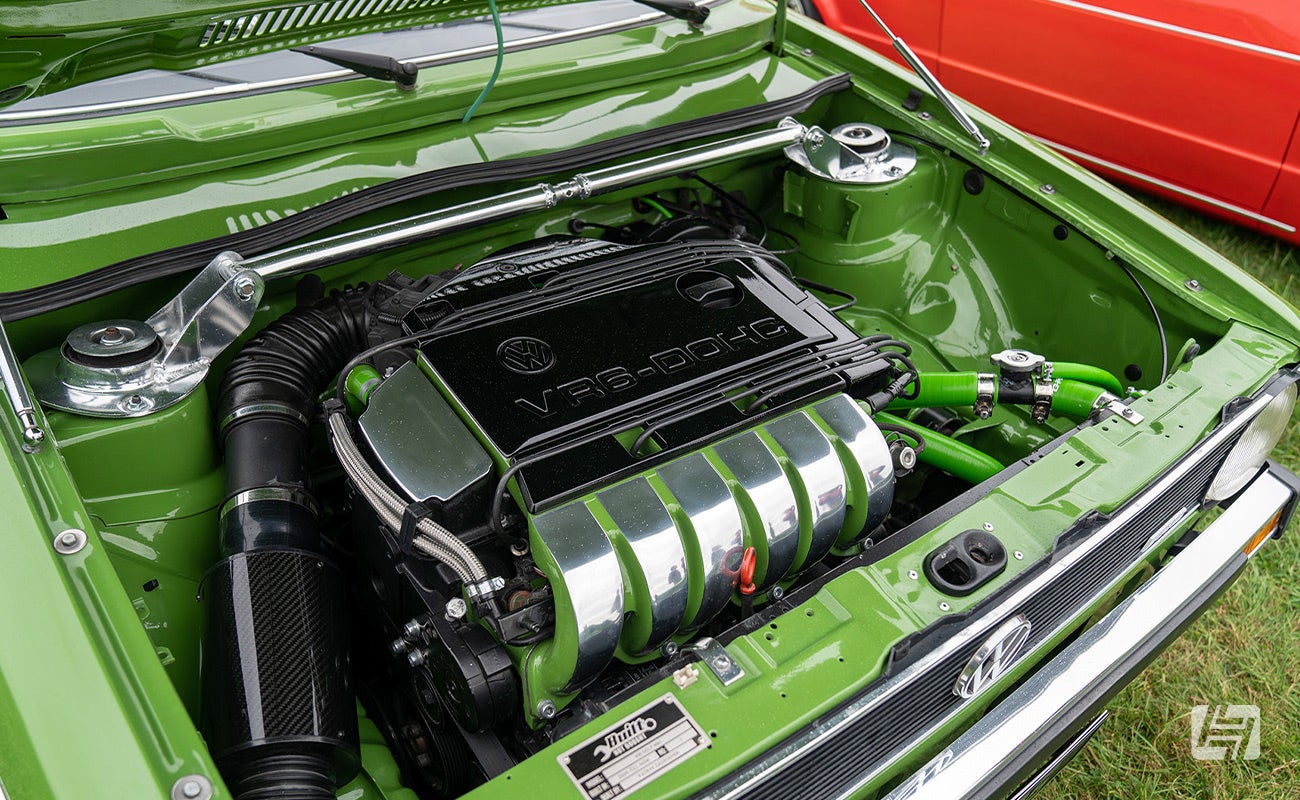

15. Roll Cage
Adding to the benefits that a strut brace offers a vehicle, fitting a roll cage will add even more stiffness to a car. It may falsely increase your confidence behind the wheel and won't necessarily improve your chances of walking away should it all go horribly wrong. Just be sure to fit padding around your head and tell your insurance company (they don't all look kindly upon them). Want to get even further into the stiffness game, start seam welding, and weld your roll cage into the pillars and strut towers. You may no longer enjoy driving it on the road though!


16. Weight saving up top
Almost in contrast to bolting a climbing frame inside your car, our last suggestion is all about removing weight and is something you can at least start for free. In the words of Colin Chapman, of Lotus fame "add lightness" to make your car go faster. Removing unessential items will all help, especially removing or relocating weight from high up to down low, effectively dropping the centre of gravity. It is for this reason, race cars don't have sunroofs, back seats or spare wheels in the boot. You could quite easily save the weight of a passenger if you put your mind to it. You may want to keep what you remove though, just in case you change your mind in the future.
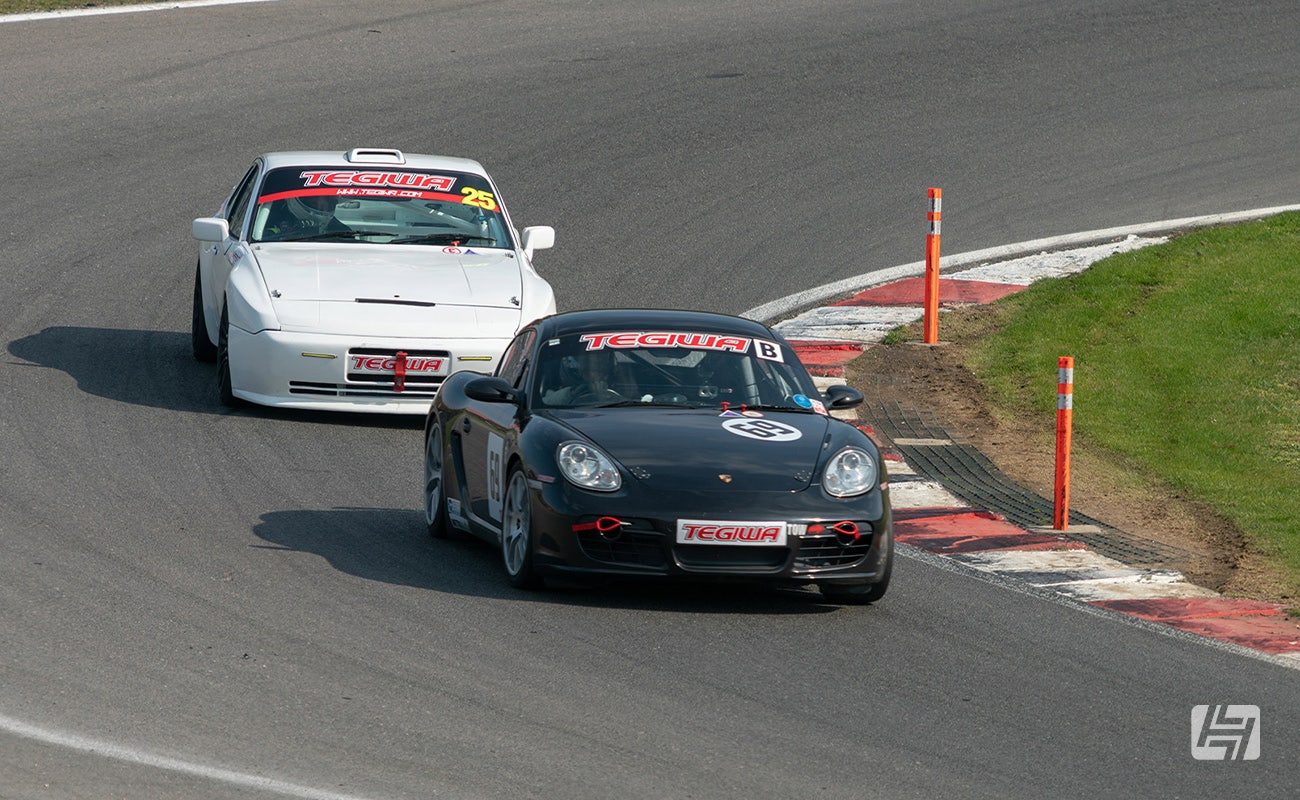

Hopefully, you have found this guide useful. Maybe you have learnt something or at least reaffirmed your thoughts when it comes to car suspension modifications. Whatever you chose to do, please do it safely and with the right equipment and products for the job.
Andy




 Beetle
Beetle
 T2 Bay
T2 Bay
 T2 Split
T2 Split
 T25
T25
 Transporter T4
Transporter T4
 Transporter T5
Transporter T5
 Golf Mk1
Golf Mk1
 Golf Mk2
Golf Mk2
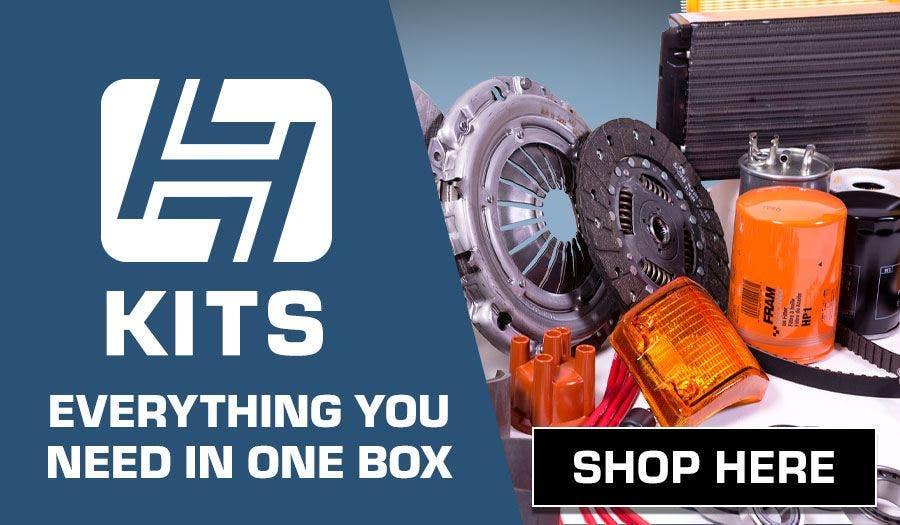

 911
911
 996
996
 997
997
 986 Boxster
986 Boxster
 987 Boxster
987 Boxster
 912
912
 944
944
 924
924
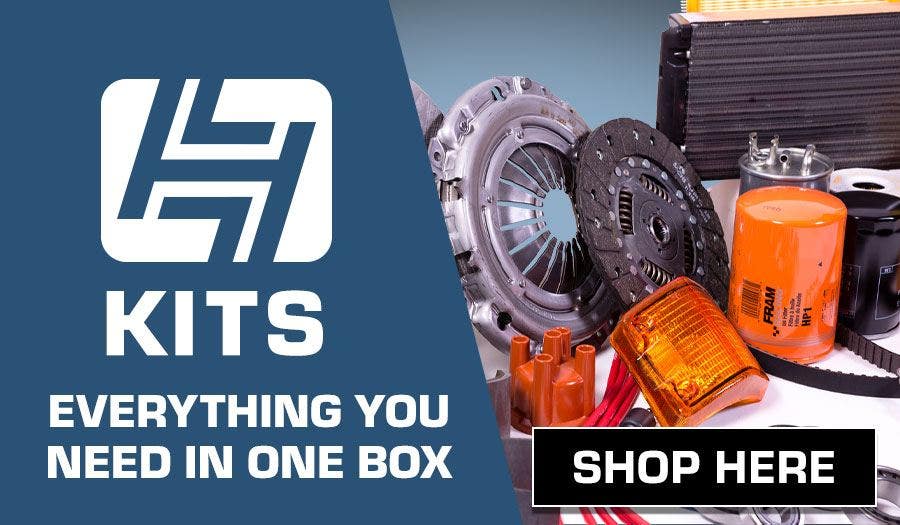

 Defender
Defender
 Discovery Series 1
Discovery Series 1
 Discovery 2
Discovery 2
 Series 1, 2 & 3
Series 1, 2 & 3
 Freelander
Freelander
 Freelander 2
Freelander 2




